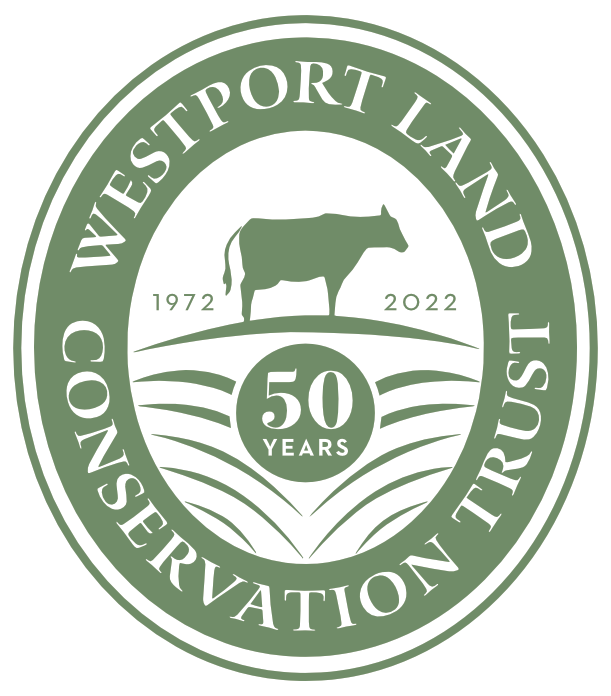
A new row of native Sugar Maple (Acer saccharum) trees will soon line the road frontage at the future community park on Adamsville Road. Photo by Greg Stone.
WLCT’s work continues at the former St. Vincent de Paul property! Thank you to those folks who have contacted us directly within the past week with your questions and concerns about the current tree removal. We appreciate the opportunity to share WLCT’s plans and activities at the property.
As a part of WLCT’s acquisition of the former St. Vincent de Paul property, we are committed to restoring the open meadow landscape. As you know, our plan calls for: restoring meadow habitat in the open space, mowing a small area for passive recreation, and restoring the tree-lined central drive and road frontage.
Towards that end, we have removed 13 buildings and over 100,000 square feet of impermeable surface. We have also planted over 50 new trees in the open space area, including six native Sugar Maple trees east of the house along Adamsville Road.
As many of you know, addressing invasive plants is one challenge when restoring an open meadow landscape. The Norway Maple tree is one such invasive, and is one of the best-known Massachusetts’ state-listed invasive trees species. Seeds spread fast, then young saplings grow fast and choke out native vegetation; allowing for other invasive plants such as multiflora rose and Bittersweet to take hold. All three of these invasive plants have taken hold in the open space on this property.
Even though Norway Maples are invasive, we understand how the aesthetic quality of these mature trees contributes to the beauty and design of the landscape. So, before deciding to remove these trees we assessed alternatives with a professional arborist. Unfortunately, we determined that the trunks were likely rotted. We were also concerned by the size and quantity of limbs falling from these trees, and the danger that would pose to visitors once the park opens this June. We determined that pruning the trees would not save them and that removing them now would facilitate the restoration of the meadow. As you can see below, the stumps are indeed rotted:

The heartwood of this invasive Norway Maple tree was almost entirely rotten–a clear indication that this tree was at the end of it’s life cycle.
It is hard to see any mature tree cut down. While it does not immediately compensate for the visual loss, in March, WLCT will plant 15 native Sugar Maple trees along the stone wall to replace the removed trees. These trees are already 12-14 feet high and will grow fast to 30 feet in 10 years.
It is also hard to make this visual sacrifice in the present moment while we patiently wait for the restoration efforts to pay off. Please know that these efforts are already paying off. Last year, much of the existing meadow area was let grow to seed for the first time in decades. The tall grasses coincided with the return of eastern bluebirds to the site! This year, with more work done, we will undoubtedly welcome the return of more new wildlife.
Thank you for taking this journey with us. Please continue to reach out with any questions or concerns. We are always happy to share more details about WLCT’s landscape restoration efforts and long term planning. If you are interested in getting involved with caring for the property or preparing for the public opening, we are always welcoming more volunteers to our Tuesday Trail Team!
Sincerely,


Ross Moran
Executive Director
(508) 636-9228 extension 1

